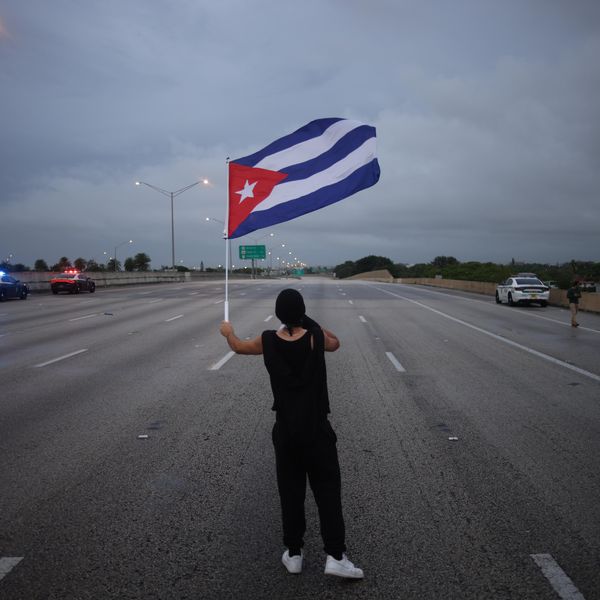After 50 days of day-and-night fighting, the joint Eritrean-Ethiopian federal offensive has ground down Tigrayan defenses to a point of collapse. There’s chatter about peace talks, but sharp disagreement on mediator and agenda. The Tigrayans want an immediate cessation of hostilities and humanitarian access, while the federal government wants to negotiate “without preconditions” — code for allowing its offensive to continue.
Eritrean President Isaias Afewerki and Ethiopian Prime Minister Abiy Ahmed had planned to conclude the war in Tigray with a decisive military victory over the weekend of October 8-9. Under Eritrean command, they mounted a joint offensive by the two national armies focused on the northwest of Tigray, aimed at capturing the town of Shire, which would have opened the road to controlling other urban centers including the capital Mekelle. Celebrations were planned for the opening of the Ethiopian parliament on October 10.
The Chairperson of the African Union Commission, Moussa Faki, announced peace talks in South Africa for that weekend. Headquartered in the Ethiopian capital Addis Ababa, the AU Commission has worked hand-in-glove with the Ethiopian government since the war began almost two years ago. Abiy was confident that by the date of the talks, the Tigrayan leaders would be dead, hiding in caves — or he could take them in handcuffs to accept their surrender.
The Eritrean and Ethiopian armies didn’t meet the deadline, but they haven’t stopped trying. New attacks were launched on three fronts on October 14.
The carnage is said to be obscene. The Ethiopian conscripts’ job is to attack and die in large enough numbers to use up their enemies’ bullets, after which Eritrean armor can charge through to capture the towns. Two weeks ago, the best estimate was that the Ethiopian army had suffered over 90,000 casualties in a month. With rudimentary medical facilities, many of the wounded will die.
The Tigray Defense Forces losses are also horrifyingly high. The Tigrayans have every motive to fight to the death; they expect that if they yield, the occupiers will repeat the mass atrocities — killing, torture, rape, pillage — that they inflicted when they controlled Tigray in late 2020 and early 2021.
The TDF has fighting spirit but is short of arms and ammunition. The Eritrean and federal armies have a huge advantage in material, especially tanks and heavy weapons — and are buying more. In a war of attrition, the demographics favor them too: Ethiopia has 120 million people, of whom just seven million are Tigrayans.
They also have their most reliable weapon, starvation, to fall back upon. The fighting and aerial bombardment have caused many civilians to flee their homes. Tigrayan hospitals have long since run out of basic medical supplies, such as painkillers and insulin. Food aid deliveries are at a halt.
Abiy’s diplomatic strategy is aimed at buying time, and it’s working.
Having spurned U.S. demands for a cessation of hostilities in September — and suffered no adverse consequences, Abiy confidently dictated the terms of a peace process to the African Union Commission Chairperson, Moussa Faki. On October 1, Faki wrote to Debretsion Gebremichael, president of the Government of Tigray, inviting him to peace talks in South Africa, led by AU High Representative General Olusegun Obasanjo. The letter broke several cardinal rules of diplomacy. The AU did not consult the two senior statespersons named to “support” Obasanjo, former Kenyan President Uhuru Kenyatta and former South African Deputy President Phumzile Mlambo-Ngcuka.
The AU Commission is staffed by officials for whom the process and protocol of peace negotiations is everyday business. Details of the letter — including an error in the date, sometimes made by Ethiopians translating from their national calendar to the Gregorian calendar — pointed the finger of suspicion at the Ethiopian government as the originator of the draft. As the Ethiopian government’s own announcement emphasized, it aligned exactly with their terms for a settlement. It was a slapdash conspiracy — explicable because Addis Ababa expected to declare victory in the meantime.
Kenyatta issued a devastating rebuke, with the line: “My attention has been drawn to a communique…” He made it clear he hadn’t been consulted. Privately, the South Africans are also fuming. And the special envoys of the United States, the European Union and the United Nations had to accept that they had been taken for a ride.
The sole virtue of the AU debacle is that it clears the fog of disinformation. There’s an opening to be seized to stop the killing.
Kenyatta has positioned himself to revive this mediation effort. In his riposte to Faki, he avoided using the words “AU-led” peace process, thus hinting at an initiative led by Africans with the AU playing a convening role. It’s a year since Kenyatta met with U.S. President Joe Biden at the White House, with the Ethiopian war on their agenda. He and other senior African leaders may contact the White House directly to ensure that, if they act, they have the highest level of backing from Washington.
It’s a wicked problem, and its core is Eritrea. Isaias is going for broke and will take advantage of any American half-heartedness to pursue his war. He is also signaling that he can be spoiler-at-large. No seasoned observer doubts that the recent attacks in neighboring Djibouti by long-dormant rebels, the Front for the Restoration of Unity and Democracy, have Eritrean fingerprints on them.
Abiy has spurned all calls to cease hostilities. In any case, he can’t order a ceasefire because the Ethiopian army is no longer his to command.
Whatever happens, the pillars of the Ethiopian state — security institutions, finance, and an elite bargain — have crumbled. State collapse is a matter of time. Expect Abiy to blame Ethiopia’s national crisis on Western perfidy and turn to the international donors, telling them that it’s their problem to solve.
For now, the issue is how to stop Isaias directing another genocidal onslaught on Tigray. That will take more than words. Every day counts.
















